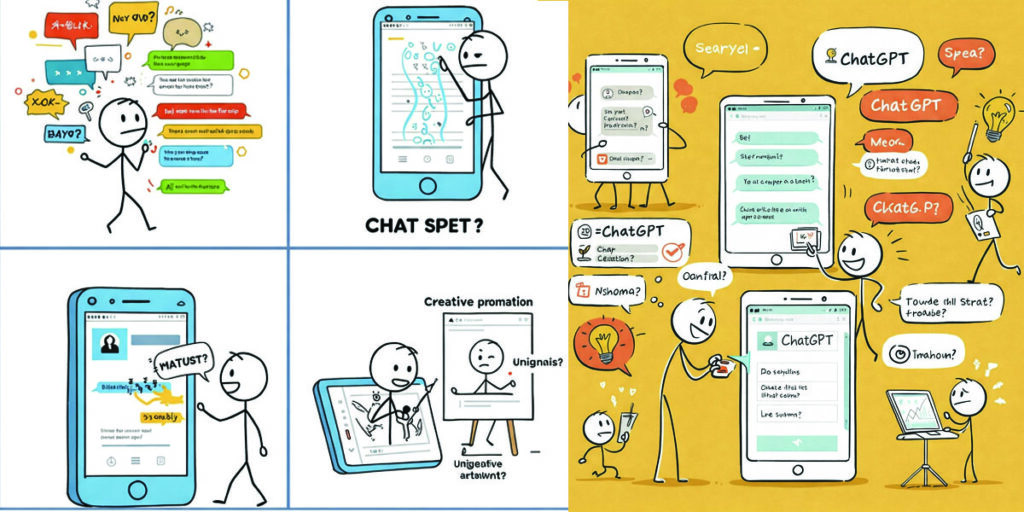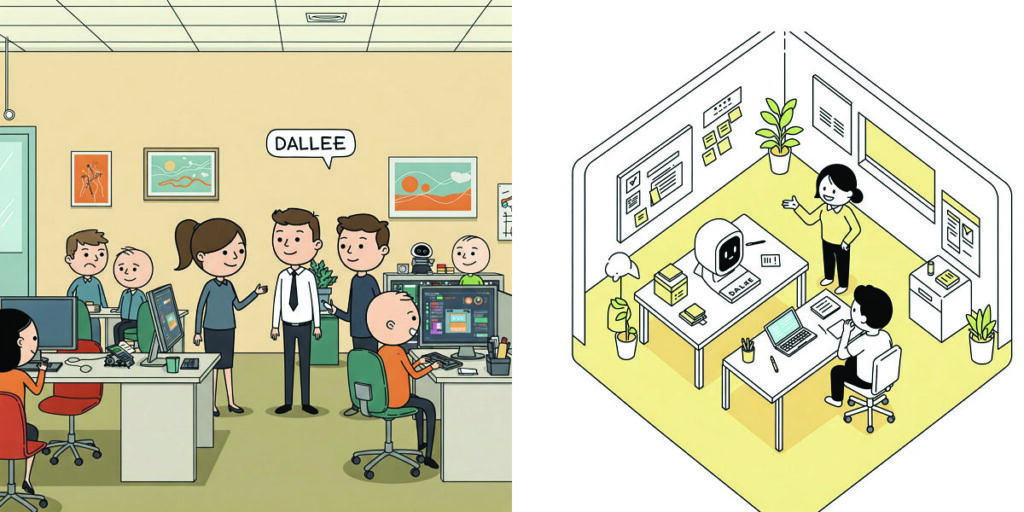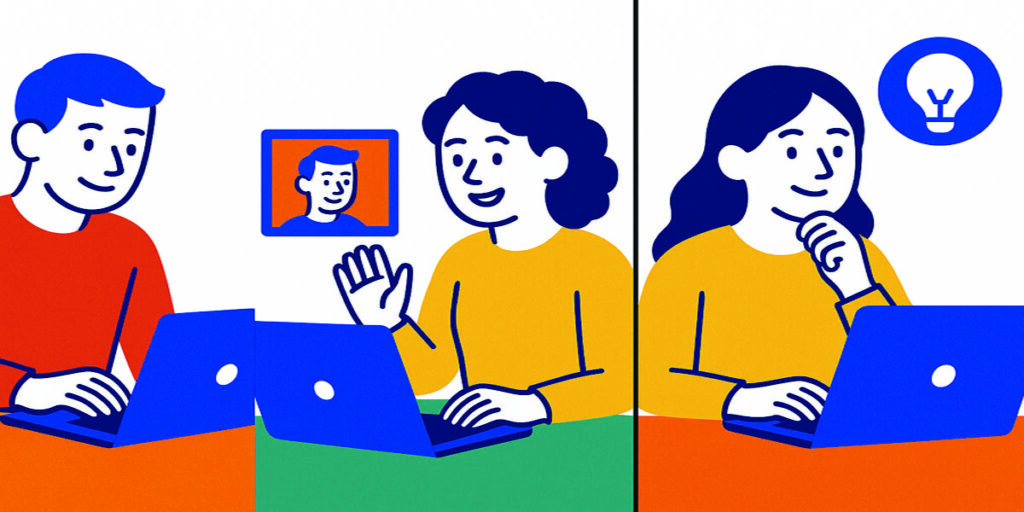AI video tool that transforms static images and text into motion graphics or music videos.
In the rapidly evolving landscape of digital content creation, tools that empower individuals and businesses to produce compelling visual narratives are gaining unprecedented traction. Among these innovators, Kaiber stands out as a pioneering AI-powered video generation platform capable of transforming static images and text prompts into dynamic motion graphics and music videos. This article delves into the history of Kaiber, examines its position within the burgeoning economic market for AI creative tools, and explores the vibrant networking and community aspects that define its impact on the creative world.
The Genesis of Motion: A Brief History of Kaiber
Founded in 2022, Kaiber emerged onto the scene during a pivotal moment in the development of generative AI. As artificial intelligence capabilities advanced, particularly in the realms of image and text generation, the natural next frontier was the automation and enhancement of video production. Kaiber was born from the vision of making sophisticated motion graphics and video content accessible to a wider audience, removing the traditional barriers of complex software, expensive equipment, and specialized technical skills.
While specific details about Kaiber’s earliest days and founding team are not widely publicized, its relatively recent incorporation in 2022 indicates a swift response to the burgeoning potential of AI in creative fields. The company is headquartered in Arcadia, California, and operates as a Software as a Service (SaaS) platform. Early on, Kaiber likely focused on developing its core AI models, training them on vast datasets of images, videos, and text to understand how to translate descriptive inputs into animated sequences.
A significant milestone in Kaiber’s history is its funding journey. As of October 2024, Kaiber secured an undisclosed amount in a Seed funding round with investment from firms like EQT Ventures and Crush Ventures. This early investment underscored investor confidence in Kaiber’s technology and its potential to capture a significant share of the emerging AI video market. Funding at this stage typically fuels product development, team expansion, and initial marketing efforts, allowing Kaiber to refine its AI models and expand its feature set.
Over time, Kaiber has evolved its offerings beyond simple image-to-video transformations. While its foundational capability remains turning static visuals into motion, the platform has likely incorporated more advanced features driven by user feedback and advancements in AI research. This includes improved control over motion, styles, and the integration of audio to create full-fledged music videos. The iterative development of its AI models is crucial, as the quality and coherence of AI-generated video are directly tied to the sophistication of the underlying algorithms and the data they are trained on. As AI technology progresses, so too does Kaiber’s ability to produce more realistic, artistic, and controllable video outputs.
The user interface and experience have also been key areas of development. Simplifying the process of video creation for users with varying levels of technical expertise has been paramount. This involves intuitive controls for guiding the AI, clear options for selecting styles and moods, and efficient rendering and export capabilities.
In essence, Kaiber’s history is a testament to the rapid pace of innovation in the AI space. From its founding in 2022 to securing initial funding, the company has quickly positioned itself as a notable player in the AI video generation market by focusing on accessibility and creative transformation.
The Economic Pulse: Navigating the AI Video Generation Market
The economic market for AI video generation tools is experiencing explosive growth, driven by the increasing demand for video content across virtually all industries and the desire for faster, cheaper, and more accessible production methods. Kaiber operates within this dynamic and competitive landscape, vying for market share alongside a growing number of AI creative platforms.
Market research indicates a robust trajectory for the AI video generator market. In 2024, the global market size was estimated to be in the range of $534.4 million to $706.6 million. Projections show a significant expansion, with forecasts estimating the market could reach between $2.5 billion and $3.8 billion by 2032 or 2033, exhibiting a compound annual growth rate (CAGR) of roughly 19.5% to 20.6% during this period. This rapid growth is fueled by the widespread adoption of AI video software in sectors like marketing, entertainment, education, and e-commerce.
Several factors contribute to this economic boom:
- Demand for Video Content: Video is the dominant form of online content, from social media feeds to corporate training materials. Businesses and creators constantly need fresh, engaging video, and traditional production methods can be time-consuming and costly.
- Cost and Time Efficiency: AI video tools drastically reduce the time and resources required to produce videos. Automating tasks like animation, editing, and even generating initial concepts significantly lowers production costs.
- Democratization of Video Creation: AI tools empower individuals and small businesses without extensive video production budgets or expertise to create professional-looking content, leveling the playing field.
- Advancements in AI Technology: Continuous improvements in machine learning models, particularly in areas like generative adversarial networks (GANs) and transformer networks, lead to higher quality and more controllable video outputs.
- Personalization at Scale: AI enables the rapid creation of multiple video variations tailored for different audiences or platforms, facilitating personalized marketing and communication.
Kaiber’s business model, like many in this space, is based on a subscription-based service, often incorporating a credit system. This tiered approach allows users to choose plans based on their usage needs, offering varying levels of access to features, generation capacity (measured in credits), export resolution (e.g., 1080p, 4K), and storage. Credit packs can also be purchased for additional usage beyond the monthly allocation. This model provides recurring revenue for Kaiber while offering flexibility to users.
The competitive landscape for AI video generation is intensifying. Key competitors include platforms like Runway (with its Gen-2 model), Pika Labs, Synthesia (focused on AI avatars), Descript (combining transcription and editing), and established players like Wondershare and Animoto who are incorporating AI features. Each platform has its strengths; Runway is often noted for subtle, realistic motion, while Pika Labs is recognized for dynamic movements. Kaiber differentiates itself by focusing on the artistic transformation of static inputs and its potential for creating unique, visually striking motion graphics and music videos.
The economic impact of tools like Kaiber extends beyond the direct revenue generated by the platforms themselves. They are reshaping the creator economy by:
- Lowering Entry Barriers: More individuals can become video creators without significant upfront investment in equipment or training.
- Increasing Productivity: Creators can produce content faster, allowing them to take on more projects or experiment with different ideas.
- Enabling New Forms of Creativity: AI tools facilitate the creation of visual styles and effects that might be difficult or impossible to achieve with traditional methods.
- Driving Demand for Related Services: As AI video becomes more prevalent, there is a growing need for services like prompt engineering, AI model training (for custom styles), and integrating AI-generated content into broader marketing or artistic projects.
The funding landscape also reflects the market’s potential. Beyond Kaiber’s seed round, competitors like Pika have raised significant capital (e.g., $55 million), indicating strong investor belief in the future of AI video. This investment fuels further innovation, driving the market forward and introducing increasingly powerful tools.
However, challenges exist. The technology is still maturing, and issues like video coherence, consistency, and the generation of unintended artifacts can arise. Ethical considerations surrounding deepfakes, copyright, and the potential impact on traditional creative roles also need to be navigated responsibly. Despite these challenges, the economic indicators point towards a sustained period of growth and innovation in the AI video generation market, with Kaiber well-positioned to capitalize on this trend.
Connecting Creativity: Networking and Community Around Kaiber
Beyond its technological capabilities and economic footprint, Kaiber fosters a significant aspect crucial for any creative tool’s success: community and networking. For users of generative AI platforms, sharing creations, learning from others, and collaborating are essential for pushing the boundaries of what’s possible and maximizing the value of the tool.
Kaiber cultivates its community through various channels:
- Platform Features: While specific in-platform networking features might evolve, tools often incorporate galleries, sharing options, and the ability to remix or draw inspiration from others’ work. Kaiber’s “Superstudio” concept, an infinite canvas for ideation and generation, hints at a workspace designed to facilitate creative exploration and potentially collaborative projects.
- Social Media: Platforms like Twitter, Instagram, YouTube, and TikTok are natural homes for showcasing AI-generated video. Kaiber users frequently share their creations using relevant hashtags, allowing others to discover their work and the capabilities of the tool. Kaiber itself likely maintains a strong social media presence to highlight user creations, announce updates, and engage with its audience.
- Discord Servers and Online Forums: Dedicated online communities, such as Discord servers, provide a space for users to connect directly, ask questions, share tips and tricks, troubleshoot issues, and participate in challenges or collaborative projects. These forums are invaluable for knowledge sharing and fostering a sense of belonging among users.
- Tutorials and Educational Content: The community benefits greatly from users and Kaiber itself creating tutorials, guides, and demonstrations of how to achieve specific visual styles or effects. This shared knowledge helps new users get started and allows experienced users to learn advanced techniques.
- Artist Showcases and Collaborations: Highlighting prominent artists or creative projects that utilize Kaiber not only serves as marketing but also inspires the community and demonstrates the professional applications of the tool. Kaiber has reportedly collaborated with artists like Grimes, showcasing the platform’s potential in music video creation.
The networking facilitated by Kaiber and similar AI tools has several positive impacts on the creative landscape:
- Accelerated Learning: Users can quickly learn from the collective experience of the community, overcoming technical hurdles and discovering creative approaches more efficiently than working in isolation.
- Inspiration and Cross-Pollination: Seeing what others create with the same tool can spark new ideas and encourage experimentation with different styles, prompts, and techniques.
- Collaborative Opportunities: The ease of sharing and the emergence of online communities can lead to collaborations between artists, musicians, writers, and other creators who might not have connected otherwise. A musician could collaborate with a visual artist using Kaiber to create a music video, or a writer could work with an animator to visualize a story.
- Building Portfolios and Gaining Recognition: AI video tools allow creators to rapidly build a portfolio of diverse visual work, which can be shared online to gain exposure and attract potential clients or collaborators.
- Feedback and Iteration: Sharing work within a community provides opportunities for constructive feedback, helping creators refine their skills and improve their outputs.
The networking aspect is particularly vital in the context of AI-generated content, where the prompt engineering and understanding of the AI model’s nuances are often key to achieving desired results. The community becomes a collective intelligence, helping users unlock the full potential of the tool.
Furthermore, the networking around Kaiber contributes to the broader conversation about AI in creativity. Users discuss ethical implications, copyright issues, and the evolving role of the artist in an age of generative tools. This dialogue is crucial for shaping the responsible development and use of AI in the creative industries.
While online communities are a primary hub, the impact of Kaiber’s networking extends to real-world applications. Businesses can use AI-generated video for internal communications, training materials, and marketing campaigns, integrating these tools into their existing workflows and collaborating across teams. Marketing agencies can leverage Kaiber to quickly prototype ad creatives or generate personalized video content for clients.
In essence, the networking and community around Kaiber transform the platform from a standalone tool into a collaborative ecosystem. It’s where users learn, share, inspire, and push the boundaries of AI-powered creative expression together.
Challenges and the Horizon: Shaping the Future of AI Video
Despite its rapid advancements and growing market presence, Kaiber and the broader field of AI video generation face several challenges. Overcoming these hurdles will be crucial for the continued evolution and widespread adoption of these tools.
Technical limitations remain a significant area for improvement. While AI video is becoming increasingly sophisticated, issues such as maintaining visual coherence across frames, preventing flickering or artifacts, and achieving precise control over complex movements or narratives can still be challenging. Generating photorealistic or highly complex scenes consistently remains an active area of research. The ability to accurately depict human or animal anatomy and motion without distortions is another frontier.
Ethical considerations are paramount and require ongoing attention. The potential for misuse in creating convincing “deepfakes” for malicious purposes, such as spreading misinformation or impersonating individuals, is a serious concern. Establishing clear guidelines, developing robust detection methods, and promoting responsible usage are critical. Copyright and ownership of AI-generated content also present complex legal questions, particularly when AI models are trained on vast datasets that may include copyrighted material. The impact on traditional creative roles and industries also warrants careful consideration and strategies for upskilling and adaptation.
Market saturation is another potential challenge as more companies enter the AI video space. Kaiber will need to continually innovate and differentiate itself to remain competitive. This could involve developing unique AI models, offering specialized features for specific use cases (e.g., music videos, marketing content), or building stronger community and support systems.
Looking towards the future, the horizon for AI video generation is filled with exciting possibilities. Expected advancements include:
- Improved Coherence and Consistency: Future AI models will likely produce videos with greater visual stability and narrative flow, reducing the prevalence of artifacts and inconsistencies.
- Enhanced Control and Editability: Users will gain more granular control over specific elements within the video, allowing for more precise artistic direction and easier editing of AI-generated content.
- Longer and More Complex Sequences: The ability to generate longer video clips and more intricate, multi-scene narratives directly from prompts is a key area of development.
- Real-time Generation and Interaction: Future tools might offer near real-time video generation, allowing for more interactive and dynamic creative workflows.
- Integration with Other AI Modalities: Tighter integration with AI text, image, and audio generation tools will enable the creation of richer, multimodal content from a single platform.
- Personalized and Adaptive Content: AI could power the creation of videos that adapt in real-time based on viewer interaction or data, opening up new possibilities for interactive storytelling and personalized marketing.
For Kaiber, the future likely involves continued investment in its core AI technology, expanding its feature set to cater to a wider range of creative needs, and strengthening its community to foster innovation and collaboration. The development of specialized tools, partnerships with other creative platforms, and exploring enterprise solutions for businesses could also be part of its growth strategy.
The potential impact of AI video tools like Kaiber on the future of content creation is profound. They have the capacity to revolutionize filmmaking, advertising, education, and entertainment by making video production faster, more accessible, and more versatile. While challenges remain, the ongoing advancements in AI technology and the growing adoption of these tools suggest a future where transforming imagination into motion is within reach for an ever-increasing number of creators.
Kaiber’s Place in the Creative Revolution
Kaiber has quickly established itself as a significant player in the burgeoning field of AI video generation. Its history, though relatively short, is marked by a commitment to transforming static visuals and text into dynamic motion, lowering the barrier to entry for video creation. Economically, Kaiber operates within a market experiencing rapid growth, driven by the increasing demand for video content and the inherent efficiencies offered by AI. Its subscription model and credit system provide a flexible approach for users with varying needs.
Crucially, Kaiber’s impact extends beyond its technology and business model to the vibrant community and networking it fosters. By providing platforms for sharing, learning, and collaboration, Kaiber empowers its users to explore the full creative potential of AI video and contribute to the collective advancement of this new art form.
While challenges related to technical refinement, ethical considerations, and market competition persist, the future of AI video generation is bright. As AI technology continues to evolve, tools like Kaiber will become even more powerful, intuitive, and integrated into creative workflows. Kaiber’s journey reflects the broader trend of AI democratizing creative processes, enabling a new wave of artists, storytellers, and businesses to bring their visions to life through the power of motion graphics and video. In this ongoing creative revolution, Kaiber is not just a tool; it’s a catalyst for transforming imagination into reality, one pixel and prompt at a time. Sources and related content




















